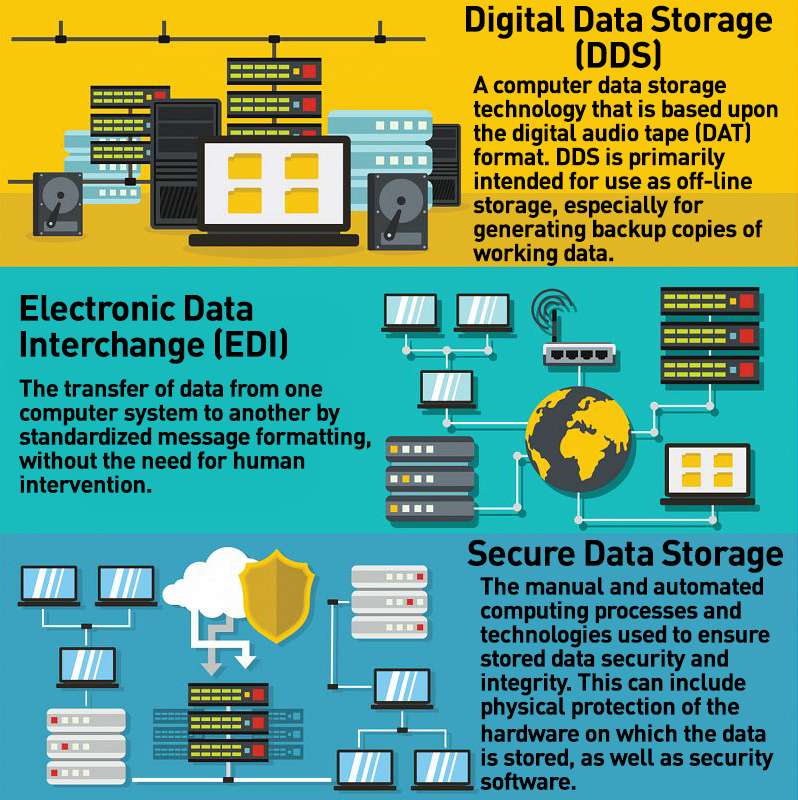Exactly How Correct Data Damage Adds To Robust Computer Security Services and Mitigates Dangers of Data Breaches
In today's electronic landscape, the relevance of proper data destruction can not be overstated, as it offers as an essential component of extensive computer system safety services. The effects of insufficient information devastation expand beyond mere conformity; they can greatly affect a company's cybersecurity stance and reputation.
Relevance of Information Destruction
In today's electronic landscape, the value of data devastation can not be overemphasized. As organizations significantly depend on digital assets, the potential dangers related to information breaches and unapproved accessibility magnify. Effective information destruction is a vital part of a detailed info protection technique, guarding sensitive information from falling under the hands of harmful stars.
When data is no longer needed, simply erasing files or formatting hard disks is insufficient. Residual data can usually be recovered using conveniently available tools, posing substantial threats to both organizations and individuals. This highlights the necessity for durable data devastation techniques that make certain all data is irretrievably removed.
Additionally, regulatory conformity mandates, such as GDPR and HIPAA, highlight the commitment to protect delicate data, including its proper disposal. Non-compliance can cause serious financial penalties and lawful effects. data destruction. Thus, incorporating reliable data destruction methods not just boosts safety yet additionally fortifies an organization's track record and credibility

Techniques of Secure Data Erasure
Numerous efficient techniques of secure data erasure can be utilized to make sure that sensitive info is permanently gotten rid of from storage space devices. One commonly recognized approach is data overwriting, which entails replacing existing data with arbitrary patterns several times. This technique substantially lowers the opportunities of data recovery, although it may not work versus advanced forensic techniques.

Physical destruction is additionally a dependable method, where storage gadgets are made unusable with shredding, crushing, or incineration. This approach makes sure that data can not be recovered whatsoever but needs cautious handling of hazardous products.
Last but not least, specialized software application tools made for protected information erasure supply functionalities that abide by different erasure criteria. These tools typically include attributes like confirmation processes to verify successful information destruction.
Employing these approaches in mix can improve information safety and security and alleviate the risks associated with information breaches, making certain that sensitive details is not accidentally subjected.
Legal and Compliance Factors To Consider
The techniques employed for protected data erasure not just offer to safeguard delicate information but also must align with legal and conformity structures governing data protection. Organizations are required to abide by various policies, such as the General Data Defense Regulation (GDPR), the Health Insurance Transportability and Accountability Act (HIPAA), and the Repayment Card Industry Data Protection Criterion (PCI DSS) These guidelines mandate particular protocols for data managing and devastation, ensuring that delicate and personal information is irretrievably eliminated when no longer needed.
Failing to follow these lawful requirements can lead to considerable fines, including fines and reputational damage. Furthermore, companies need to keep records of information destruction processes, demonstrating conformity during audits or Continued investigations. This documentation not just secures versus lawful repercussions but also enhances trust fund with consumers and stakeholders, showcasing a commitment to data protection.
Integrating lawful and conformity factors to consider right into information damage methods is important for any type of company. It decreases the threat of data violations and shows an aggressive technique to safeguarding delicate info, ultimately fostering a society of security and accountability throughout the organization.
Influence On Cybersecurity Posture
Efficient data devastation substantially boosts a company's cybersecurity pose by decreasing the potential strike surface for cyber threats. When delicate information is not effectively destroyed, it stays obtainable to harmful actors who can manipulate this information for unapproved access, identification theft, or company reconnaissance. By implementing robust information destruction protocols, companies can effectively go right here minimize the threat of data violations and boost their general safety structure.
Furthermore, the secure disposal of unneeded or outdated information not just shields sensitive information however also helps organizations abide by market guidelines and criteria. Failing to appropriately ruin information can result in severe legal effects and reputational damage, additional endangering an organization's cybersecurity stance.

Inevitably, prioritizing reliable information devastation is vital for fostering a durable cybersecurity stance, guaranteeing that organizations stay vigilant versus advancing cyber dangers while safeguarding their critical properties and stakeholders.
Ideal Practices for Organizations
Carrying out ideal practices for information damage is crucial for companies intending to protect delicate information and mitigate cybersecurity threats. Organizations must develop a comprehensive information destruction plan that describes procedures and responsibilities. This plan this should comply with appropriate laws, such as GDPR or HIPAA, ensuring lawful conformity.
Secondly, it is necessary to make use of accepted data sanitization methods, consisting of information cleaning, degaussing, and physical damage, customized to the sort of information and storage medium. Using certified professionals for information devastation solutions boosts the integrity of these techniques.
In addition, organizations should keep a detailed stock of all information storage devices, making sure that all out-of-date or replaced devices undergoes damage. Regular audits of information destruction techniques can help identify weaknesses and enhance conformity.
Employee training is one more important aspect, as personnel must understand the value of information destruction and stick to established protocols. Companies need to document all data devastation activities to provide responsibility and traceability, which can be invaluable throughout audits or in the occasion of a breach.
Verdict

One commonly acknowledged technique is information overwriting, which includes replacing existing data with random patterns numerous times.The approaches employed for secure information erasure not just offer to safeguard sensitive information however additionally has to line up with lawful and compliance structures controling information defense. These guidelines mandate particular procedures for data handling and damage, making sure that individual and sensitive data is irretrievably eliminated when no longer needed.
By implementing durable information damage protocols, organizations can effectively minimize the threat of information breaches and enhance their overall safety framework.
In final thought, appropriate information destruction is important for enhancing computer system protection solutions and mitigating the risks associated with data violations. - data destruction
Comments on “The Influence of Effective Data Destruction on Cyber Security Danger Management”